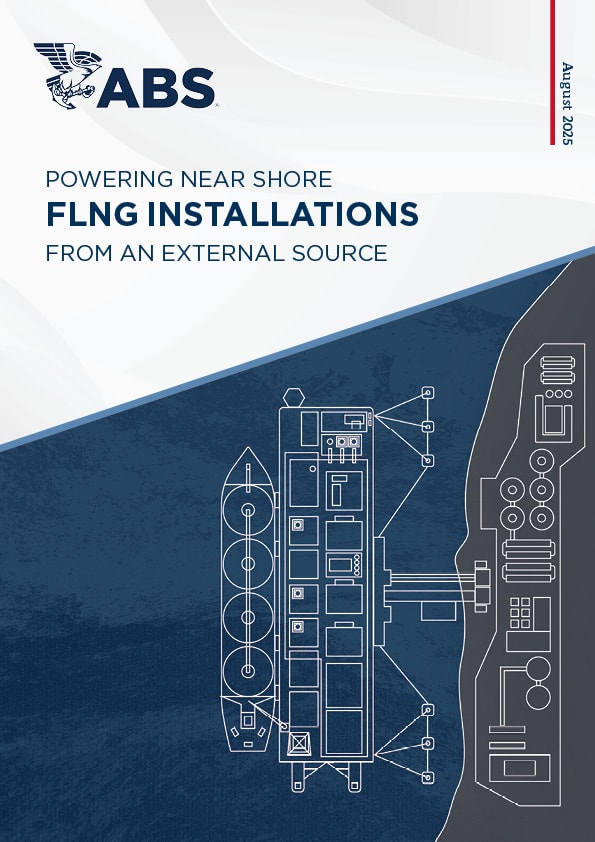
Reducing Emissions, Operational Challenges in Powering Near Shore Floating LNG Units Explored in Latest ABS Publication
(HOUSTON) In Powering Near Shore FLNG Installations from an External Source, ABS evaluates external power configurations for manned, near shore floating liquefied natural gas (FLNG) installations.
The publication delves into core design considerations for external power systems, such as power cable configurations, equipment integration and emergency preparedness. Using a goal-based standards approach, the report sets clear design goals, functional requirements, and risk criteria for integrating external power — supporting safety, reliability, and compatibility across diverse FLNG configurations.
“LNG production requires a lot of energy, traditionally supported by gas turbines and/or diesel engines on high voltage distribution systems. ABS is leveraging our technical capabilities to look at different electrical power configurations to support floating production facilities. This report deepens industry awareness of the possible emission reduction opportunities as well as reliability and safety of the power sources,” said Miguel Hernandez, ABS Senior Vice President, Global Offshore.
The report delivers critical insights into the evolving energy landscape, looking at external power systems that could advance FLNG operations by reducing emissions, enhancing energy efficiency and significantly lowering maintenance requirements.
ABS is a global leader in classifying floating production units, at the forefront of advancing safety for the offshore industry. With offshore innovation spanning more than 70 years, ABS provides guidance and assesses new and evolving solutions to help safely manage assets for sustainable offshore operations. Learn more here. Download a copy of Powering Near Shore FLNG Installations from an External Source here.
